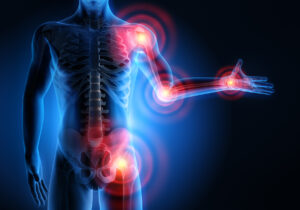
Early menopause and HRT among hormonal factors linked to heightened rheumatoid arthritis risk
Having 4 or more children and fewer than 33 reproductive years also seem to be influential
Early menopause—before the age of 45—taking hormone replacement therapy (HRT), and having 4 or more children are among several hormonal and reproductive factors linked to a heightened risk of rheumatoid arthritis in women, finds a large long term study published in the open access journal RMD Open.
Women are more susceptible to this autoimmune disease than men, note the researchers. They are 4–5 times as likely as men to develop rheumatoid arthritis under the age of 50, and twice as likely to do so between the ages of 60 and 70. And the disease seems to take a greater physical toll on women than it does on men.
While hormonal and reproductive factors are thought to contribute to women’s heightened susceptibility to the disease, it’s not entirely clear which factors might be particularly influential.
In a bid to find out, the researchers drew on 223,526 UK Biobank participants whose health was tracked for an average of 12 years.
During this time, 3313 (1.5%) women developed rheumatoid arthritis, and several hormonal and reproductive factors were associated with heightened disease risk, after accounting for potentially influential factors, such as lifestyle, level of social and economic deprivation, ethnicity and weight (BMI).
Starting periods after the age of 14 was associated with a 17% higher risk when compared with starting them at the age of 13, while going through the menopause below the age of 45 was associated with 46% heightened risk compared with going through it at the age of 50-51.
Fewer than 33 reproductive years—defined as the interval between starting periods and going through the menopause—was associated with a 39% heightened risk. And compared with having 2 children, 4 or more was associated with an 18% higher risk.
Hysterectomy or removal of one or both ovaries (oophorectomy) was associated with 40% and 21% higher risks, respectively, although only a few women had these procedures.
While no clear association emerged between the use of the Pill and rheumatoid arthritis risk, HRT use and to a lesser extent, its duration, were associated with, respectively, 46% and 2% higher risks.
This is an observational study, albeit over a reasonably long period, and therefore can’t establish cause and effect, and the researchers acknowledge various limitations to their findings.
For example, the UK Biobank is made up of relatively healthy and affluent people of white ethnic background, so isn’t representative of the UK population at large.
Nevertheless, the findings prompt the researchers to suggest that hormonal and reproductive factors should be carefully evaluated in women diagnosed with rheumatoid arthritis.
And they conclude: “The findings of this study are significant and form a basis on which novel and target-specific intervention measures to curb the risk of [rheumatoid arthritis] in women may be developed.”
Notes for editors
Research: Hormonal and reproductive factors in relation to the risk of rheumatoid arthritis in women: a prospective cohort study with 223 526 participants doi 10.1136/rmdopen-2023-003338
Journal: RMD Open
Funding: National Natural Science Foundation of China; Anhui Provincial Natural Science Foundation; Research Fund of Anhui Institute of Translational Medicine
Link to the Academy of Medical Sciences press release labelling system
http://press.psprings.co.uk/
Externally peer reviewed? Yes
Evidence type: Observational
Subjects: Women





